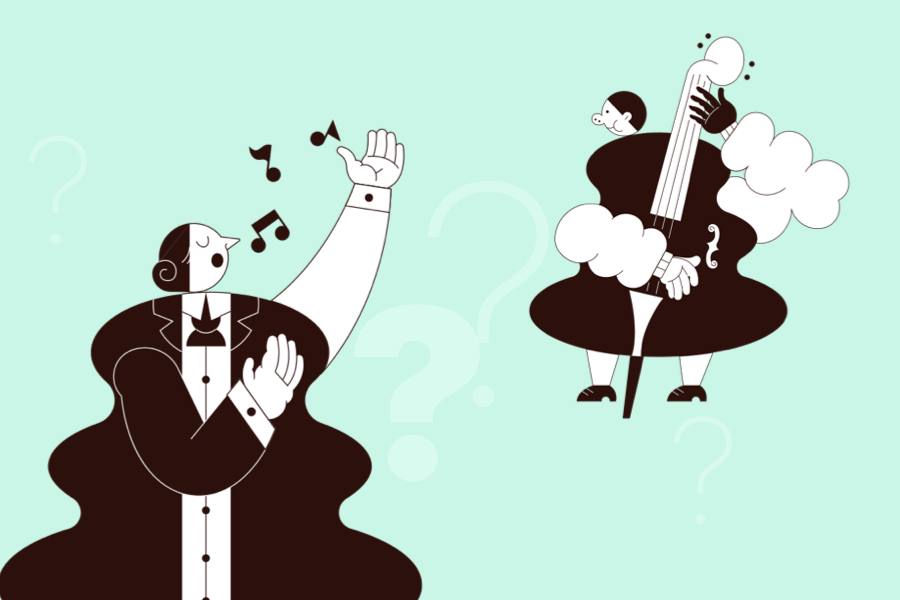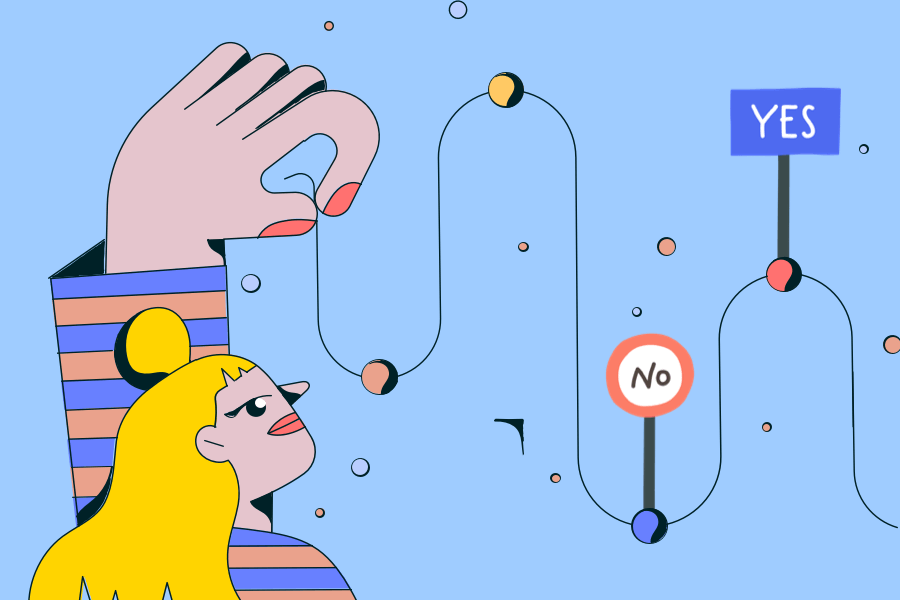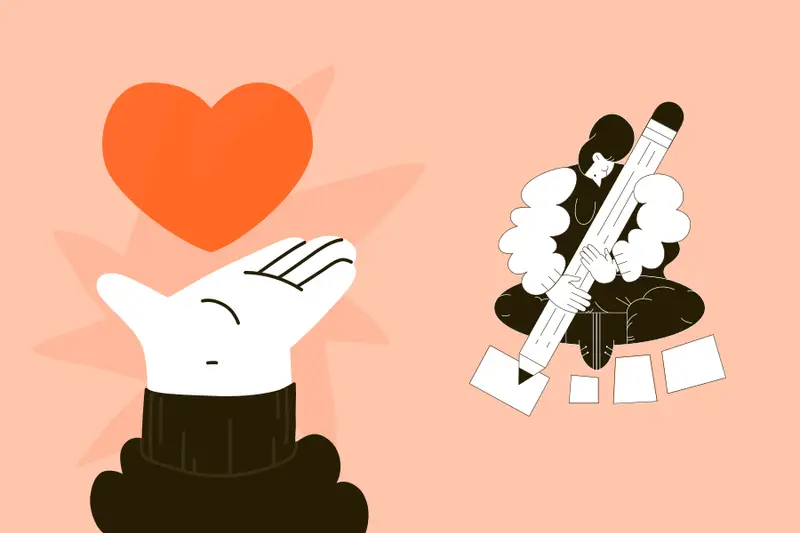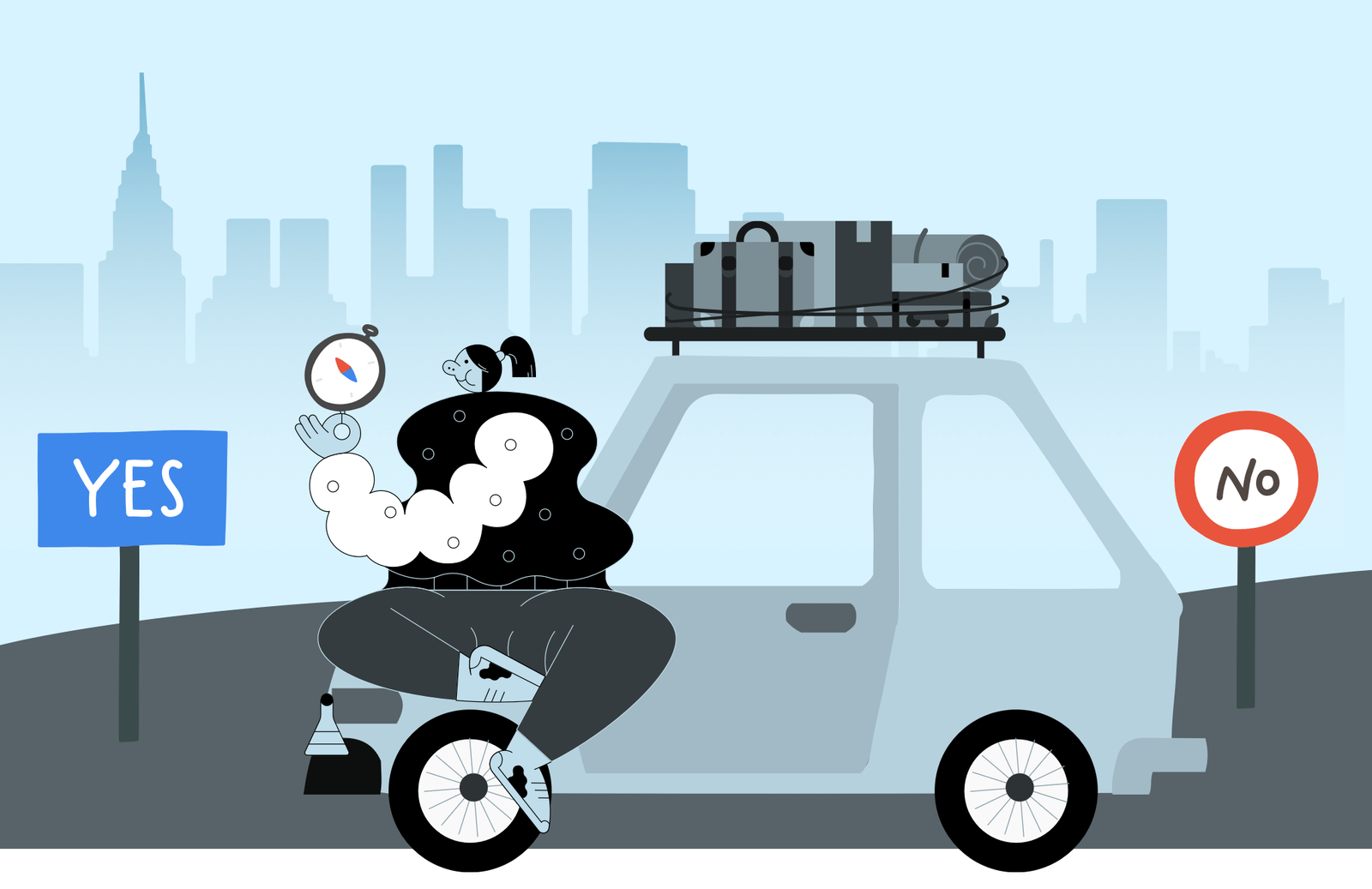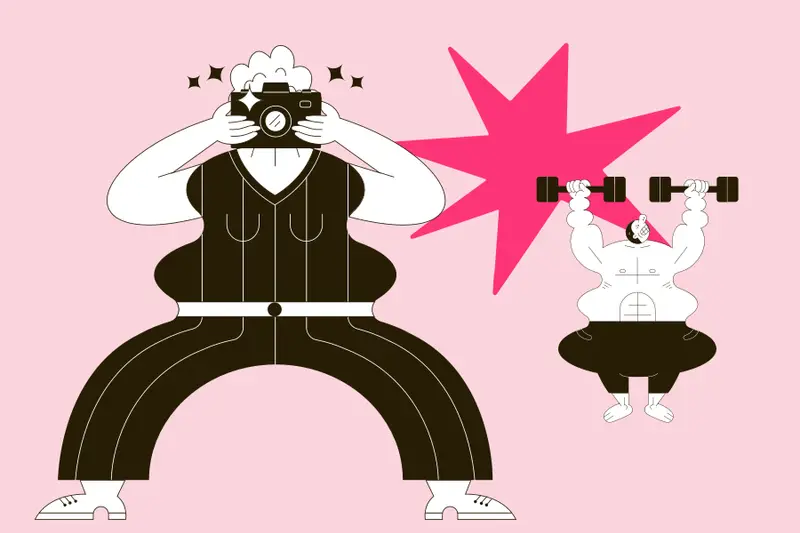June 5, 2022 • 7 Minute Read
Who Do You Want To Be?
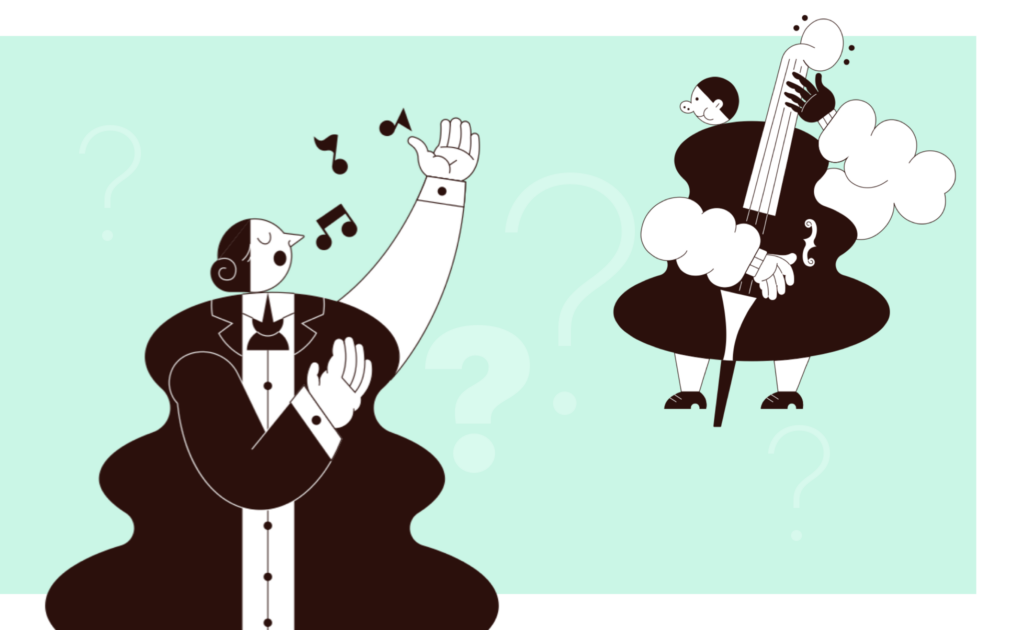
Change is hard.
Put another way, if you’re trying to change some habit or pattern in your life, there’s an 80% chance you’ll fall back to your old ways.
Not a very encouraging way to start an article about life change, right? Well, this doesn’t have to be you. Read on to learn how first being clear on who you want to be, before deciding what you are going to do can increase your chances of making a lasting change in your life.
5 minutes of french a day? No sweat.
At the start of this year I decided I was going to finally learn to speak reasonably good french.
I’ve been trying for years. My husband is french. His entire extended family lives in France. We visit often.
I studied french in high school. I’ve taken a gazillion french classes over the years. I have a live-in french tutor (my husband). Despite all this, I still break into a sweat after the first ‘bonjour’ when I find myself in a situation that requires speaking french.
Speaking french makes me uncomfortable. I’m self-conscious of my bad accent and funky grammar. Learning a new language takes time and dedication. This year, I decided enough is enough. My plan was to do something *every day* to improve my french. I didn’t want it to be hard. I wanted something manageable that I knew I could do every day. I decided I would try the popular Duolingo app. I had multiple friends doing it as well so I thought it would be fun.
I also thought it would be easy.
Last year I decided I wanted to improve my surf popup. A popup is how a person lying on a surfboard gets to a standing a position when trying to catch a wave. It’s similar to a burpee. At the time, my ‘pop up’ was more like ‘crawl up.’ My plan was to do 10 popups a day for 3 months. I worried it would be hard. A popup is pretty exhausting and I’m usually winded after just 3. I surprised myself by sticking with it and after 3 months I had an amazing popup.
How hard could it be to study french for 5 minutes a day with Duolingo?
Well, turns out it was really hard. Doing Duolingo took 5 minutes. I didn’t have to lay on the floor. I didn’t sweat. It required no muscle. I still dreaded it. After the first euphoric week of 7 completed exercises in 7 days, my motivation started to wane. Instead of doing Duolingo right I woke up, I started doing it after lunch. When I started doing it right before I went to bed, I knew I was in trouble. I managed to go 35 days before breaking my streak and once that happened, I abandoned it all together. Delete.
I felt disappointed and perplexed. How could one seemingly easy goal be so hard and another seemingly hard goal, be so easy?
Outcome vs. Identity
It was in reading James Clear’s, Atomic Habits, that it all became clear. It the book’s second chapter he talks about ‘Identity-Based Habits.’
According to him, most people (myself included) approach setting goals by focusing on an outcome they want – getting healthier, getting a new job, losing 10 pounds. Once they decide what they want, they then figure out how to get there – join a gym, run a marathon, stop eating so much takeout.
This method of focusing on outcomes and process can absolutely work, but it doesn’t often lead to lasting or significant change.
Let’s say you want to get healthier and decide the way to do that is to train for and run a marathon. You begin training. You change your lifestyle. You start eating healthier and give up drinking. You run regularly. You feel great! You run your race. Woo hoo! Fantastic! You’ve met your goal! But what happens next? How do you maintain these changes to your life now that your goal is met? It’s harder than you think.
What if instead of choosing an outcome (to run a marathon), we choose an identity (to be a runner)?
Your current behaviors are simply a reflection of your current identity. What you do now is a mirror image of the type of person you believe that you are (either consciously or subconsciously).
– James Clear, Atomic Habits
If you want to enact lasting change, instead of starting with an outcome, start with this question:
I wanted to be a better surfer.
This was the reason I was so motivated to do surf popups, but so unmotivated to study french.
It came down to who I wanted to be.
Surfing is something I’ve been passionate about ever since moving to southern California. I’ve surfed for years and for many of those years, it wasn’t unusual to surf for hours and catch zero waves. I often joked that I often spent more time underwater than on top of it. No matter how bad I was though, I never gave up, largely because I knew who I wanted to be. During all those years of missing waves, there would always be surfers gliding effortlessly across the waves right next to me. I wanted to be them.
My relationship with learning french was very different. I studied french because I thought it would be helpful. I wanted to learn french because I thought I should. I was solely focused on an outcome.
Who do you want to be?
If you want to enact lasting change, instead of starting with an outcome, start with a question.
Who do you want to be?
Do you want to be a better surfer? Do you want to be a better writer? Do you want to be a good friend? Do you want to be a healthy person? Do you want to be a reliable friend?
This is a hard question and maybe you only know the result you want. That works too.
If you know what you want, just work backwards from there. Think of the result or outcome you want.
Now ask yourself, ‘what kind of person can achieve that same result?’
I wanted to be a better surfer, so I became the type of person who exercised outside the ocean so as to improve my time in the ocean.
If you want to be a better writer, become the type of person who writes 500 words a day.
If you want to be a healthy person, become the type of person who makes healthy choices.
Once you figure this out, you’re halfway there.
Prove it to yourself.
Once you know who you want to be, the only task left is to act like it.
According to James Clear, the process of changing your beliefs is pretty simple.
Step 1. Decide the type of person you want to be.
Step 2. Prove it to yourself with small wins.
If you want to be a better writer, prove it to yourself by writing every day.
If you want to be a healthy person, prove it to yourself by walking 10K steps every day.
If you want to be a reliable friend, prove it to yourself by never being late.
It can be that simple.
Become that person.
Once you know what you want, become the type of person who can make that happen.
The next time you set a goal or habit, first ask yourself, who do I want to be? Focus on the identity you want, rather than an outcome.
Once you establish that identity, create a mental picture of who that person is. Better yet, create a digital vision board with words and photos that can help you create a tangible representation of that identity.
While trying to improve my surfing, in addition to watching surfers, I collected photos and videos of my favorite surfers and looked at them almost daily to remind me of what I wanted and why I was working hard. I still look at them and am continuously adding to that vision board as I’ve improved.
One of the benefits of creating a digital vision board on your phone is that you can carry it with you everywhere and it can change over time. It’s fun for me to look at my vision board and see how I have evolved as a surfer. There are numerous apps that making creating a vision board quick and easy.
Trust that the results will follow.
Related Reads
Who Do You Want To Be?
When seeking change in your life, start with this simple question. Your answer can be the difference between creating a lasting change or just a short term one.
40 Inspiring Quotes to Create the Life You Want
You have great power within to create the life you want, but the road there may not be easy. Here are some of our favorite quotes to motivate you at every part of the journey.
Thinking of Starting A Gratitude Journal? Try A Gratitude Jar Instead.
While keeping a gratitude journal is a wonderful way to express gratitude on a daily basis, it’s not the only way. A fun alternative is the gratitude jar.
“I don’t know what I want to do with my life.” 50 tips to move forward.
“Figuring out what to do with your life is like driving a car at night. You don’t have to see where you’re going. You just have to see two or three feet ahead of you.”
How to Make a Digital Vision Board in 5 Steps
A vision board is a collection of photos and words that is a visual representation of a goal or dream you’re striving for. A vision board is a tool that helps you say, ‘This is what I want.’
